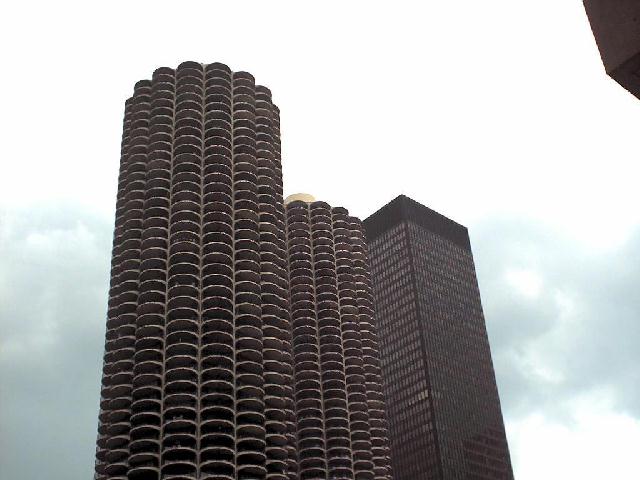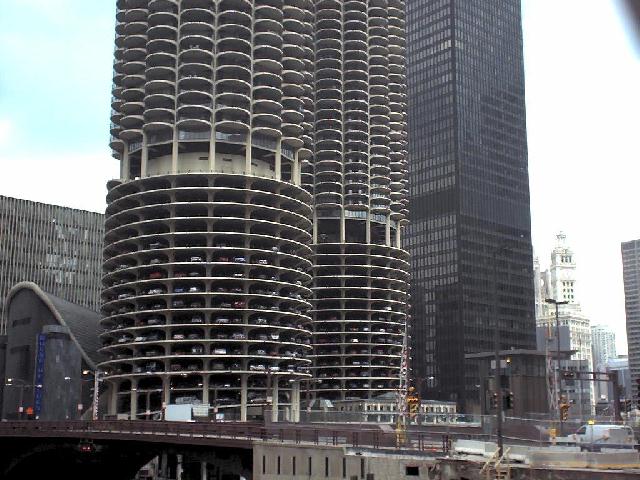|

 - -
2001 NB
|
|
The
Marina City towers are twin monuments to suburban sprawl-- actually, to
the reversal thereof. In the midst of postwar America's severe case of
white flight, the hollowed-out cities left behind were dreary places. Marina
City was designed to enliven its bank of the Chicago River and revive interest
in the city. The unique cylindrical forms are the work of architect Bertram
Goldberg. He intended the buildings to function as trees, with trunk-like
cores from which apartment pods sprouted like leaves. The 60-story towers,
which were the tallest concrete structures in the world upon their completion
in the mid-1960s, have been compared to two corn cobs or two stacks of
pies. Beyond its aesthetic intrigue, Goldberg wanted Marina City to be
a self-contained city. When they opened, the towers contained offices,
a theater, a grocery store, restaurants, a bowling alley, a swimming pool,
parking, and, at their roots, a marina to dock boats. Goldberg had to get
around Chicago's zoning codes which prohibited such mixed-use facilities.
Since then, Marina City has become the home of the House of Blues.
Goldberg's
philosophy of organic architecture stands in ironic contrast with the plain,
all-right-angles IBM Center directly across the street from Marina City--a
black box that was designed by one of Goldberg's teachers. Here is how
Goldberg described his architectural vision:
"Our time..,
has made us aware that forces and strains flow in patterns which have little
relationship to the rectilinear concepts of the Victorian engineers. We
have become aware of the almost live quality which our structures achieve,
and we seek the forms which give the most life to our structures."
These are my
favorite two buildings in Chicago; arguably no others are as instructive
icons of Chicago's commitment to urban vitality and architectural imagination.
-NB
-More about
Marina City from GreatBuildings.com
and Skyscrapers.com |
|
|